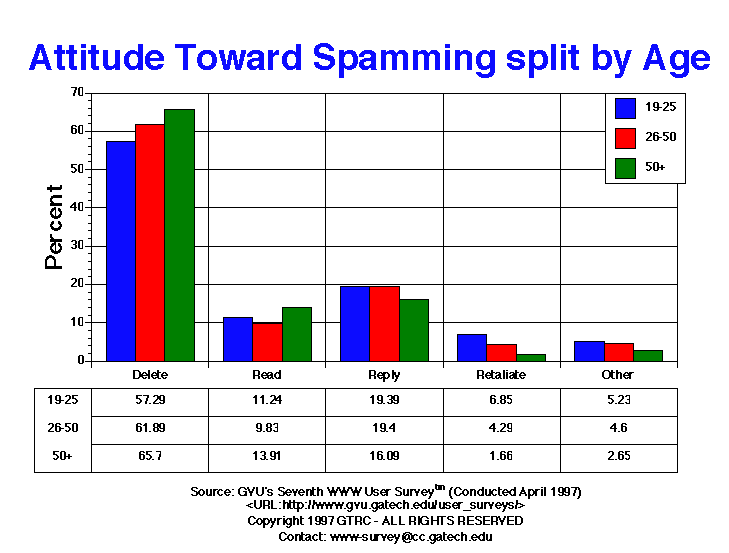CS457/CS546: Computer Networks II
|
The User's Perspective
In the computing world, spam is generally regarded as unwanted or unsolicited, electronically transmitted messages. While there is near universal agreement that this includes unsolicited commercial e-mails (UBE), there is no general consensus on what else it includes. In 1999, the Gartner Group released the results of a survey that asked 13, 100 participants (all internet users) their definition of spam (see Table 1).
Definition Percent of
ResponsesUBE (Unsolicited Bulk E-mail) 74 UCE (Unsolicited Commercial E-mail) 72 Chain Letters 44 Duplicate Postings 22 Pop-Up Ads 18 Virus Warnings 11 Banner Ads 10 Jokes 8 ISP Product / Service Information 6 Table 1: Definitions of Spam
Note: The total of percents exceeds 100% because respondents were allowed to choose more than one definition.
People's Attitudes Toward Spam
Table 2: Primary reasons for disliking spam
Reason For Disliking Spam Percent of
ResponsesTime it Takes 42 Invasion of Privacy 32 Offensive 15 Obscures my mail 5 Bad for kids 2 Costly 1 No specified reason 3
The survey also found that 83% of respondents disliked spam and the primary reasons they disliked it were because it was time consuming, it invaded their privacy or it was just plain offensive (see Table 2). The Georgia Institute of Technology reports that about 25% of all recipients of spam make some attempt to stop or get a measure or attempt some sort of retaliation against it.
